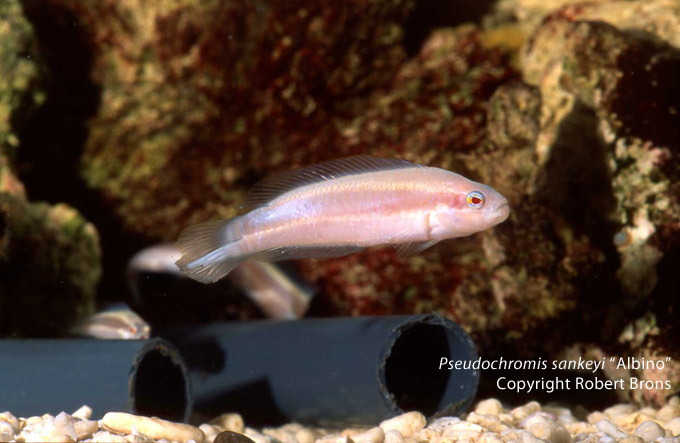Dr. Matthew L. Wittenrich discussed a very interesting fish at the recent MBI Marine Breeder’s Workshop – an Albino form of Pseudochromis sankeyi, produced by Dutch marine fish breeder Robert Brons of Brons Mariculture. While Wittenrich stated that this variation had been “lost”, that didn’t stop us from doing a bit of researching. Initially it was assumed this fish must have been produced far before marine breeding became popular (and yet, it is still just in its infancy).

Based on the publication date of a presentation by Svein Fosså, this albino Dottyback was discovered in or before 2003. Years later, the albino variety of Pseudochromis sankeyi is still listed as available by special order with at least one European livestock vendor. An email inquiry went unanswered. Could they still be out there?
With a little help from Mr. Fosså, we managed to track down Mr. Robert Brons who today still pursues breeding marine fish and offers fish culture consultation services. It turns out that the albino form of the Sankeyi Dottyback was discovered as a single random mutation occurring in a single batch of offspring from normally-colored wild parents.

Brons gave the following recollection; “In September 2002 I had 1 specimen in a larvae tank among numerous normal larvae of wild P. sankeyi broodstock. I spotted it [early on] as a larva: its unpigmented eyes made it very conspicuous. That was an exciting month until metamorphosis, but it was a strong larva that metamorphosized even before the normal sankeyi.” From there, it was a simple case of classic Mendelian recessive genetic inheritance.
Brons bred the single albino to a normally colored fish, and in the resultant next generation offspring, mated brother to sister to result in 25% albino offspring. It is quite possible that this fish, which precedes Marcel Triessl’s Albino Ocellaris by many years, may well be the first example of an albino marine ornamental fish occurring in captive propagation.

With Brons ceasing active production of marine fish in 2009, the Albino Sankeyi is one fish no longer produced. Brons sold less than 100, and considered this fish to be a commercial failure. Indeed, the only retail pricing I found on “Albino Sankeyi” was the same asking price as the normal form.
When asked about his viewpoint on the creation of this “designer” fish, Brons was perhaps pragmatic. “For me it was biologically interesting to work with on this fish”, wrote Brons. While he goes on to suggest that the albino Sankeyi may not have been particularly attractive even in his own opinion, he counterpoints that view with the notion that “Still, albinism is a natural phenomenon, all I did was to make it less rare than it usually occurs in nature.”
When considering the fate of the Albino Sankeyi, Brons suggested that some breeders in Israel received broodstock – whether they continue to preserve this form of Sankeyi to this day is unknown. It could indeed be that the rumors are true, and the Albino Sankeyi will now exist only in photos until the random albino mutation occurs again in this species.



